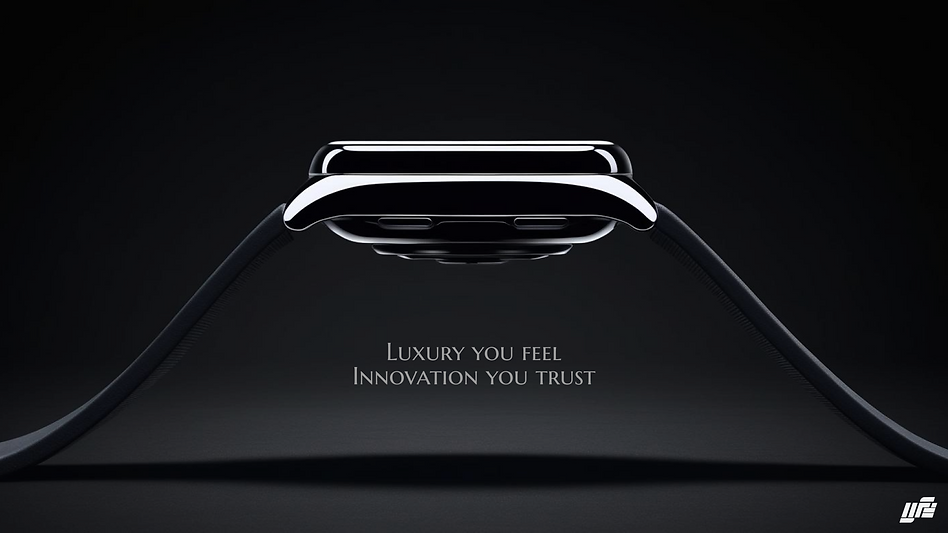A Conscious System for the Human Psyche
You’re not okay. But you only realize it once your body shuts down...
A sudden migraine. A panic spiral. That unexplained exhaustion.
We live in a world that monitors everything—our heart rate, sleep, steps, and screen time—yet somehow, we remain disconnected from the most human part of us, “how we feel.”
What if our devices didn’t just track behavior... but understood our emotions?
What if your operating system could sense your emotional state and gently guide you back to center?
Life OS is a conscious system designed to help people navigate their emotional, mental, and psychological states in real time.
It senses shifts in your emotional and mental state before they spiral.
It doesn’t interrupt or demand. It responds with quiet support, helping you recognize what you feel and what you need…
"Life OS is a self-initiated research and concept project based on my emotional design framework.
To protect the originality and future development of this system, some details, interactions, and research depth have been intentionally withheld or abstracted.
This case study is a reflection of the core vision, not the complete blueprint."

Project Type:
Self-initiated research & concept
My Role:
UX Researcher, Emotion centric design lead
Scope:
End-to-end research and system design for an emotion-centered concept. Included: Behavioral insight mapping, conceptual UX architecture, and ambient interaction thinking

The Chaos
We live surrounded by systems that track everything: our steps, our heart rate, our screen time. But none of them know when we're falling apart.
Anxiety doesn’t show up on a pedometer. Burnout isn’t logged in your calendar.
Your body warns you—tight chest, racing thoughts, sudden stillness, but you're too busy to notice.
By the time we feel the weight, it’s already too late. And yet, the tools we rely on wait for symptoms, words, and breakdowns before they act.
What’s missing isn’t more data…
What’s missing is ‘awareness’ before it collapses into crisis.
This is the chaos we live in.
And this is the silence Life OS was designed to break.

The Challenge
Designing for emotions is not like designing for goals.
There’s no start button for sadness or a push notification for grief.
Emotional states are unpredictable, often invisible, and deeply personal. They don’t follow UX patterns. They disrupt them.
Existing tools such as wellness apps, mood trackers, wearable stats, and many more treat emotion as something to be managed, labelled, or optimized. But real emotional awareness isn’t a checklist.
“It is a felt experience.”
Therefore, the challenge was clear:
How do you design for something people can’t always name, don’t always share, and often try to hide... even from themselves?
Before the Breakdown
“We must design for the way people behave, not for how we would wish them to behave.”
Don Norman
Understanding the Disconnect
To uncover how emotional shutdowns form beneath the surface, I combined:
-
simulated surveys and reflection-based user prompts
-
Studied emotional pattern loops through behavioural psychology and trauma research
-
Analysed emotional journals, logs, and stress response maps
My goal wasn’t to diagnose or treat mental health conditions; rather, it was to understand the quiet shift people go through before awareness arrives.
The space where nothing looks “wrong,” but everything feels off.
The Silence Layer
Survey insights on how emotional breakdowns go unnoticed... until they don't.
Through user simulations, personal reflection, and behavioral research, I identified recurring emotional struggles not addressed by current mental health tools. These weren’t functional gaps but invisible emotional thresholds that people consistently crossed without realizing.
The following are three core insights that shaped the foundation of Life OS:
Emotional Collapse Is Often Retrospective

Most users recognized their emotional state only after it affected their body or behavior.
Despite feeling off for days or even weeks, early signs like fatigue, irritability, or detachment were often dismissed until a clear crash forced awareness. The breakdown felt sudden, but was a long, unacknowledged descent.
Silence Is the First Symptom

Emotional overwhelm doesn’t always feel loud… It often begins with withdrawal.
Users described becoming “quiet,” “flat,” or “disconnected” before they could name what they were feeling. This numbness was often mistaken for calm, when in fact it marked the start of a spiral. Most systems never noticed this subtle fade.
Support Is Needed Most When Language Fails

The most difficult emotional moments were those that people couldn’t explain, even to themselves.
Users didn’t have the words, timing, or permission to ask for help. In those moments, traditional tools like journaling, apps, even therapy felt too effortful. What was missing was passive presence… something that could sense the shift without needing input.
From what users do to what they silently feel became the foundation of Life OS.
‘A system not built on goals or interactions, but on awareness, attunement, and ambient support.’
Listening to the Silence:
Based on the research, one thing became clear: emotional collapse doesn’t begin with action rather it starts with absence. An absence of response. An absence of movement. An absence of connection.
So instead of asking the user to track their state, Life OS was designed to notice the early, passive signs of internal disconnection:
Life OS doesn’t wait for the user to speak.
It listens before words ever arrive...
Key Emotional Signals Life OS Listens For

Breath irregularity
Subtle, unconscious changes in breathing rhythm

Interaction dropout
Missed habits, skipped routines, and avoiding usual comfort behaviors

Stillness and Withdrawal
Physical inactivity or reduced device interaction over time

Voice or movement fatigue
Less input. Slower touch. Decreased reactivity

Contextual friction
Emotional pattern loops around work, home, or deadlines
Life OS doesn’t assign meaning to any one signal. It observes the pattern, the way everything changes when a person begins to shut down emotionally.
When the system recognizes a shift that mirrors emotional fatigue or anxiety buildup, it doesn’t interrupt. It gently responds with calm prompts, guided breath, a pulse, or sometimes just presence.
"It doesn't tell you you're not okay. It shows up as if you are and stays until you are."

Designing for Emotion... Not Reaction
Most digital systems are built around a trigger-response loop…
You click
The system responds
You type
It guides you
You track
It calculates
But in emotional collapse, that logic breaks.
You stop interacting. You go quiet. You shut down. And most systems "no matter how well-designed" stay silent in return.
Life OS was designed around a different principle:
That emotion is not always visible. And support should not require effort.
This is not a mood tracker, wellness tool, or habit monitor. It is an ambient system; one that listens without watching, responds without prompting, and supports without demanding anything in return.
Core Design Principles
Ambient Awareness
"Presence without pressure."
The system passively monitors emotional micro-signals like changes in breath, movement, or withdrawal. It doesn't chase engagement or notify on schedule. It waits for tension.
And when tension arrives, it offers calm, not control.

Emotion Over Action
Emotional design isn’t about what users do; it’s about what they feel before they act.
Where most systems reward action (steps, streaks, screen time), Life OS tracks the patterns that lead up to emotional disconnection.
It's not reactive. It’s attuned

Frictionless Support
When you're overwhelmed, even opening an app can feel like a task.
Life OS removes that friction. It doesn’t need you to talk, track, or explain. It shows up silently... maybe as a soft pulse, a guided breath, or a visual cue, and lets you engage only if you’re ready.

When people are at their most vulnerable, traditional UX patterns fall apart. They stop responding. They stop tracking. They stop expressing.
So we need a new interaction model, one that’s not built around output, but around presence.
Designing an Operating System for Emotion
Life OS isn’t an app you open. It’s not a tool you “use.”
It’s an ambient system, always there, always listening, always gentle.
Built to work in the background of everyday life, Life OS operates through three silent layers:

Sensing

Understanding

Responding
Together, they form an invisible architecture that holds space for the user, even when the user isn’t aware they need it.
Sensory Layer
Listening to what most systems ignore.
This layer gathers quiet emotional signals without active input. It doesn’t ask for your mood or track your clicks; It senses withdrawal and drift over time.
-
Breathing irregularities
-
Inactivity or interaction dropouts
-
Disruption in daily rhythms
-
Skipped comfort rituals
-
Missed emotional anchors (music, journaling, rest)
These are not alarms. They’re signals — interpreted gently, not clinically.
Interpretation Layer
Patterns, not problems.
This layer doesn’t diagnose. It listens for patterns:
When a shift occurs, silence where energy used to be, stillness where touch used to flow, the system connects it to behavioral context.
-
Is this just rest or emotional withdrawal?
-
Is the user avoiding or calming?
-
Has something disrupted their baseline over multiple days?
It builds an emotional rhythm map unique to the individual.
“No metrics. Just memory."
Response Layer
Presence, not prompts.
When tension builds or disconnection deepens, Life OS doesn’t ping or push. It responds softly.
-
A calming pulse
-
A slow light animation
-
A guided breath pattern
-
A note from your past self
-
Sometimes, just stillness, staying with you
The user doesn’t need to open anything.
The support appears, just enough to be felt, never too much to resist.
The SOS Threshold
When The Silence Persists

Most emotional spirals resolve with care. But when the system senses prolonged distress, unchanging patterns, extended withdrawal, or sustained irregularity, the SOS layer activates.
This isn’t an alarm. It’s a last-resort presence.
-
Initiates grounding actions (breath/vibration/sound)
-
If still no response, it triggers the user-defined support protocol
-
Self-note
-
Message to a trusted contact
-
Optional escalation (only if the user allows)
“Life OS doesn’t assume you’re in danger.
It simply refuses to leave you alone in it."
Every layer is customizable.
Users define what presence means to them and how far support should go.
-
Prefer vibration over light? It adapts.
-
Want SOS disabled entirely? It respects that.
-
Don’t want journaling or reflection? It listens anyway.
Life OS doesn’t take over. It attunes.

System Flow: From Silence to Support
 |  |  |  |
|---|---|---|---|
 |
Impact
Designing for what can’t be seen.
Life OS began as a question:
What if technology didn’t wait for us to break before it cared?
What followed was a system designed not to track, fix, or optimize but to sense, support, and stay. It challenged the very nature of interaction: replacing usability with presence, and responsiveness with empathy.
What I Learned
-
Designing for emotion isn’t about aesthetics; It’s about attunement
-
People often don’t know how to ask for help, but their silence says everything
-
True UX doesn’t start with the interface. It starts with the invisible
-
When you design for collapse, you don’t build tools... You build trust
Life OS is still conceptual. But its foundation is clear:
A future where operating systems don’t just serve the body, they understand the soul.
I envision this project evolving into:
-
Emotion-sensing wearables with real-time behavioral response
-
AI-powered memory systems that notice emotional drift
-
A new category of empathetic UX for stillness, silence, and breakdown
Because not all suffering is loud.
And not all design needs to be seen to be felt.